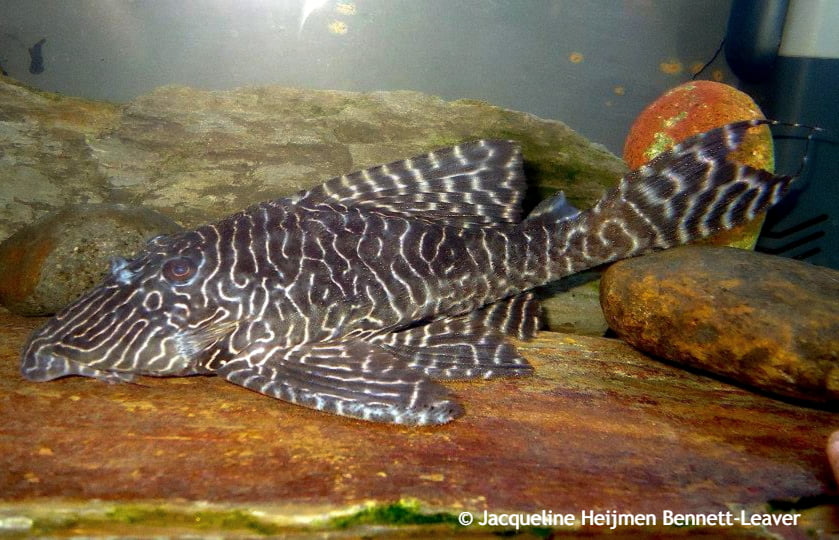
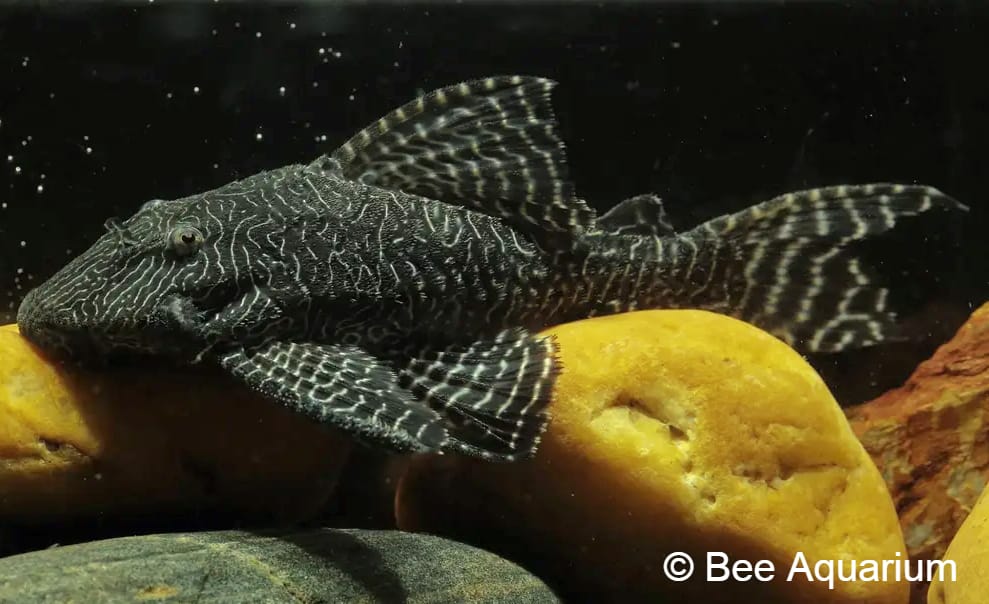
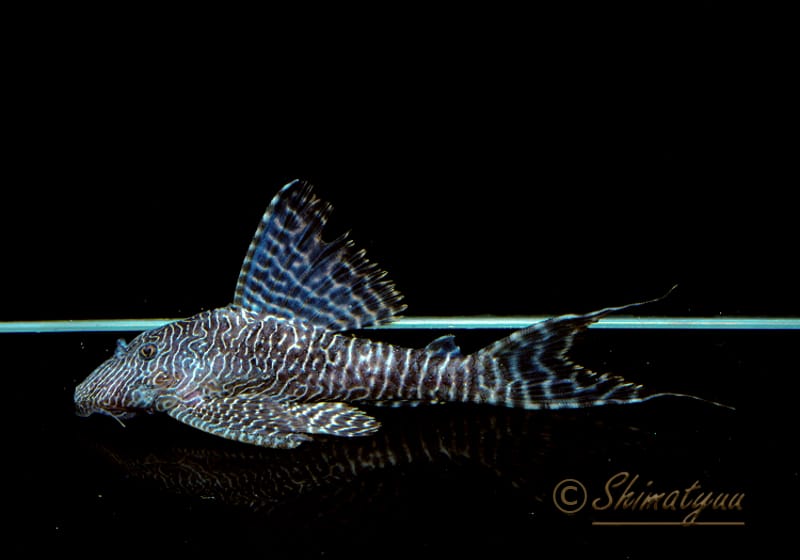
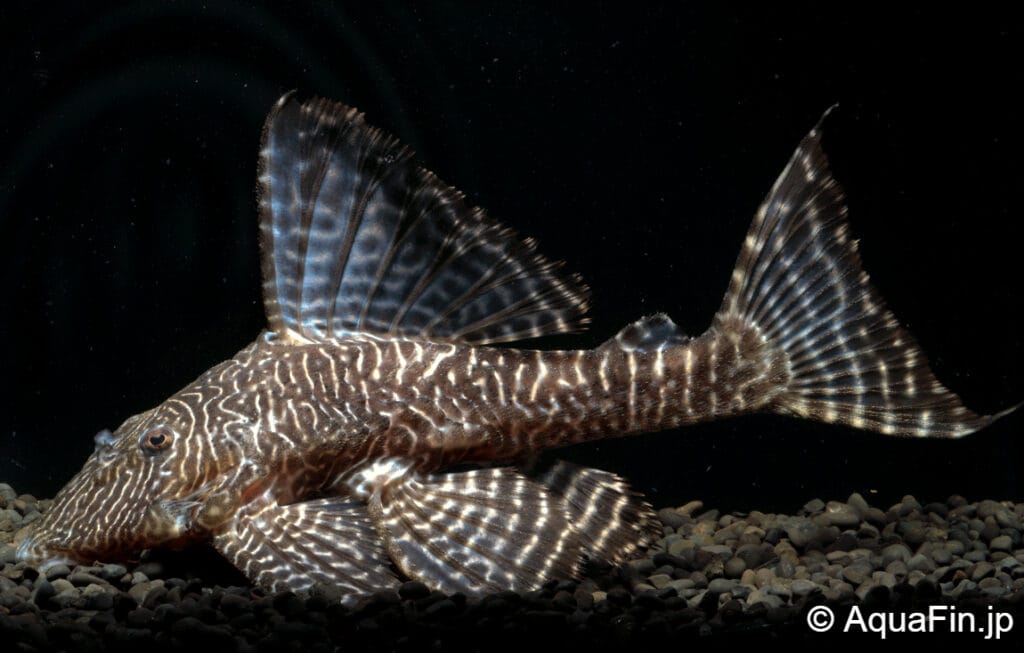
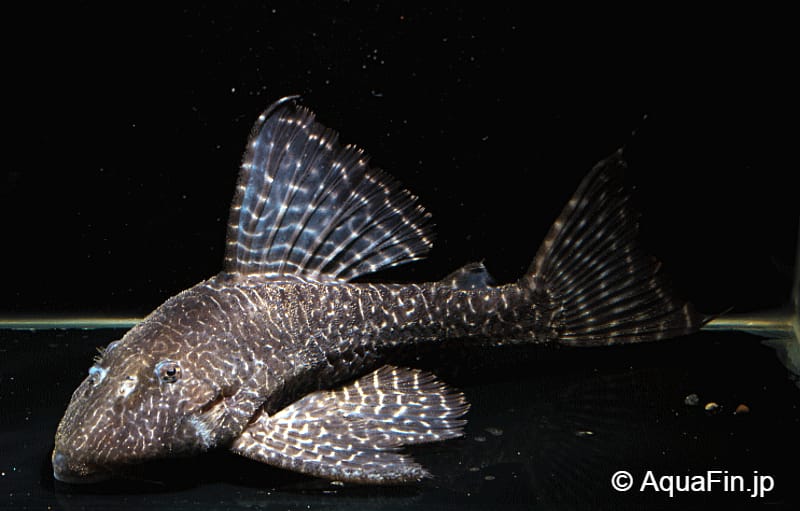
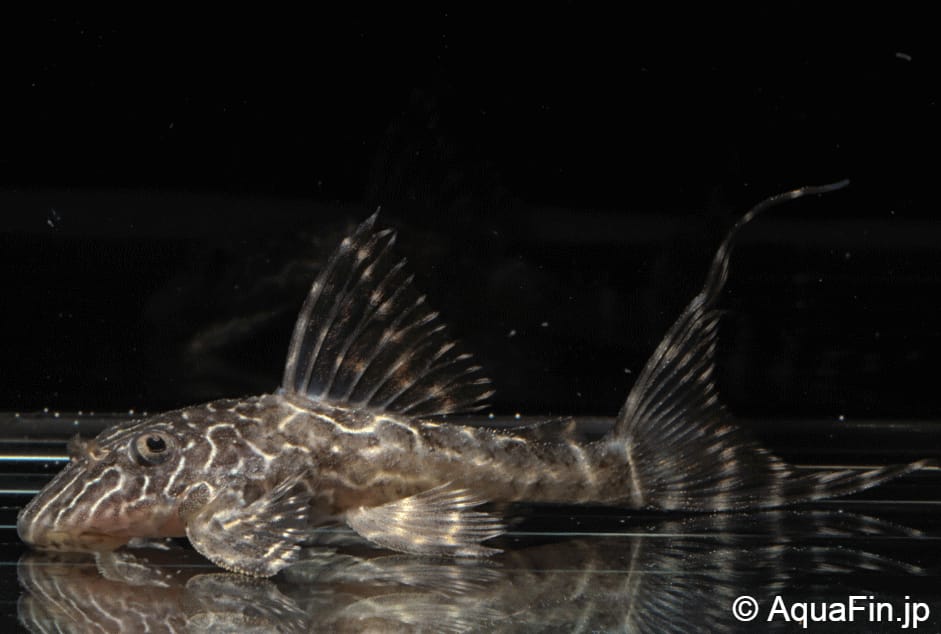
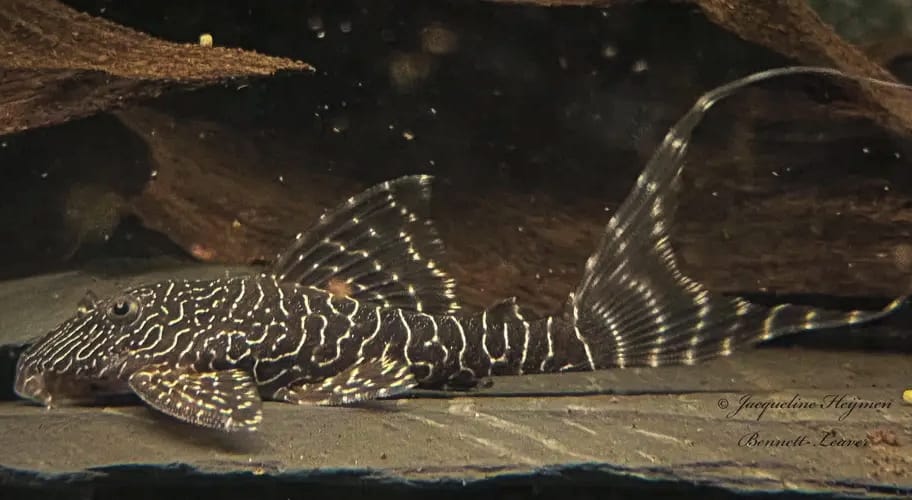
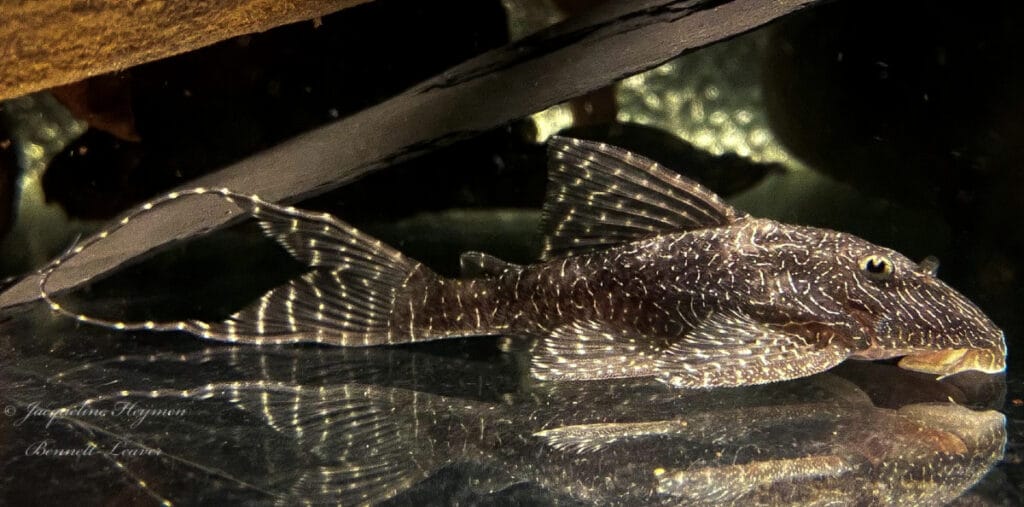
One of the most visually striking representatives of the Panaqolus genus is L453 from Rio Moa on the border between Brazil and Peru. This is a remote area and a nature reserve, so fish from there are rarely encountered in our hobby. The first import of several specimens reached Germany in 2010. The pricetag is high, and only in recent years were juvenile specimens traded. L453 is one of the largest species of Panaqolus, and is classified as one of the “lyretail Panaqolus” from the subgenus Panafilus.
Facts:
Name: Panaqolus sp.
Trade names: L453, Moa Pleco
Origin: Rio Moa, Peru.
Maximum size: 18 cm / 7”
Panaqolus species are great aquarium fish. They need shelter in the form of wood and rocks, and if they feel safe, they will venture out in search of food even during daytime. They prefer a vegetarian diet, and of course wood is essential for their digestion. Some crustaceans and insect larvae can be added, but a diet consisting of too much protein and too little vegetarian food can cause trouble for their digestion. They are peaceful Plecos, but males can be quarrelsome over territories and food. Panaqolus species are slightly more challenging to breed than many other popular Plecos, especially those from the subgenus Panafilus, but it’s usually all a matter of time and patience. When they do, they breed in typical Loricariidae manner with the male guarding the brood in his cave. Male Panaqolus develop quite impressive odontodal growth on their flanks and on their fins. In L453 this is very prominent, and even females are quite “spiky”, making it hard to tell the genders apart. So far I haven’t seen or heard of a breeding report for this species, which is also due to the rareness and high pricetag attached to these fishes.
More info:
